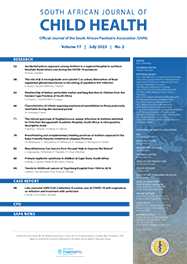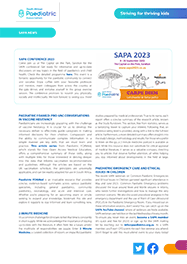Articles

The cognitive profile of children treated with radiation for acute lymphoblastic leukaemia
Abstract
Objectives. The current study focused on the assessment of memory and learning, two imperative cognitive functions. A quantitative evaluation of verbal and visuospatial memory performance in a cohort of ALL patients was done in order to establish whether there was a difference in performance between verbal and visuospatial tasks.
Methods. Eight patients with a low socio-economic background and being educated in their second language were included in the cognitive evaluation. All had received 18 Gy of radiation as part of their treatment protocol and were on maintenance treatment at the time of the study.
Results. In all the patients, primary cognitive impairment was demonstrated in ostensibly right hemisphere visuospatial tasks in comparison with ostensibly left hemisphere verbal tasks. Because deficits in visuospatial attention and working memory were identified, qualitative analysis of the results suggested that the white matter tracts in the right frontoparietal region and prefrontal cortex may be particularly vulnerable to radiation injury.
Conclusion. The study findings support vulnerability of the right hemisphere, particularly the right frontoparietal region and prefrontal cortex, to radiation injury. The decline in visuospatial cognitive abilities has major implications for second-language learners, as visuospatial learning is particularly important for them.
Authors' affiliations
S-J Whitaker, Department of Psychology, University of the Witwatersrand, Johannesburg
E Schutte, Department of Psychology, University of the Witwatersrand, Johannesburg
Keywords
Cite this article
Article History
Date published: 2012-11-12
Article Views
Full text views: 4313

.jpg)



Comments on this article
*Read our policy for posting comments here